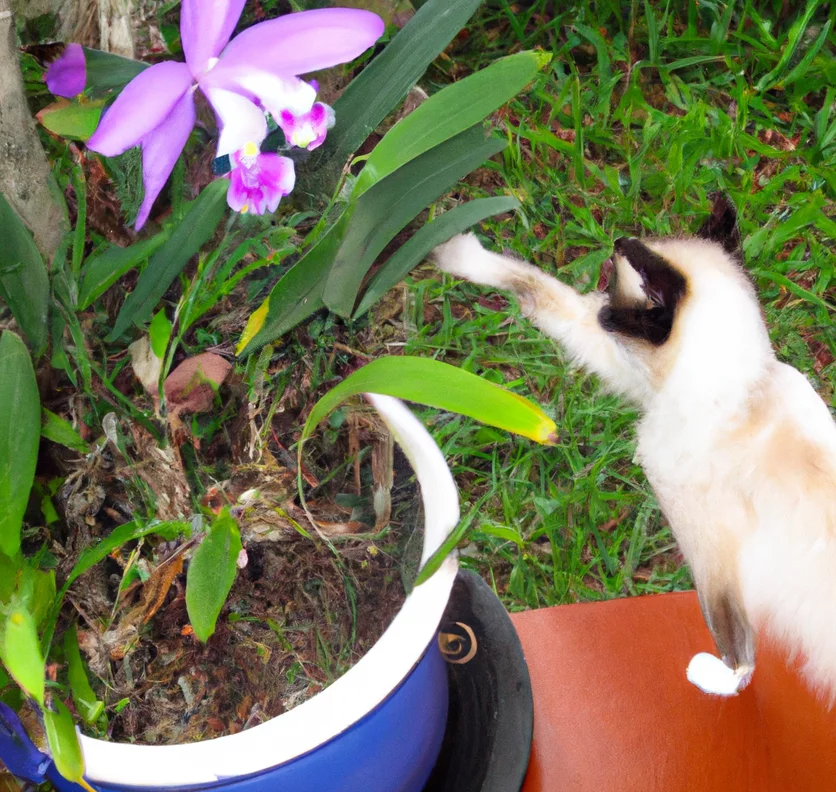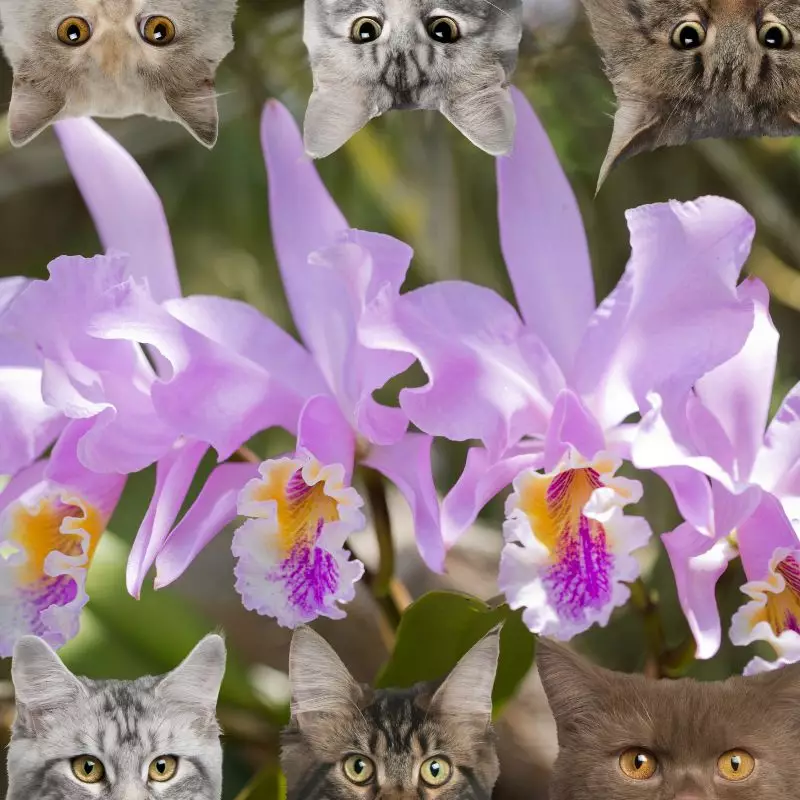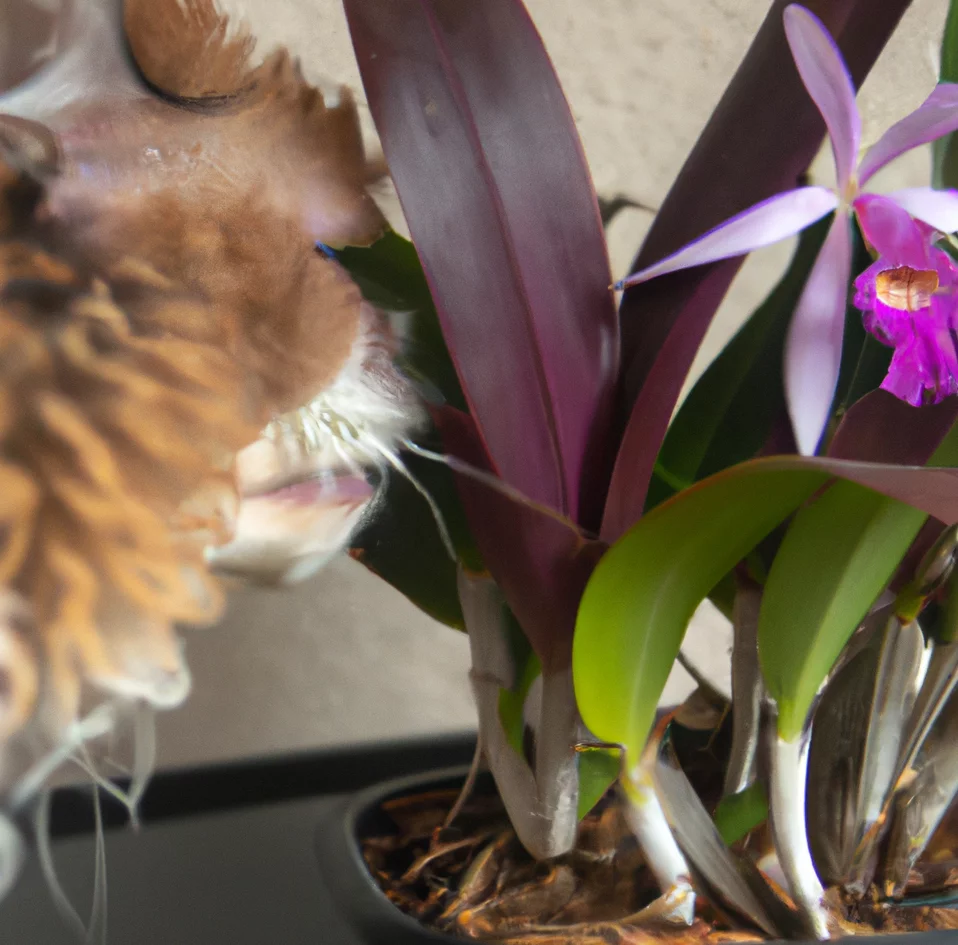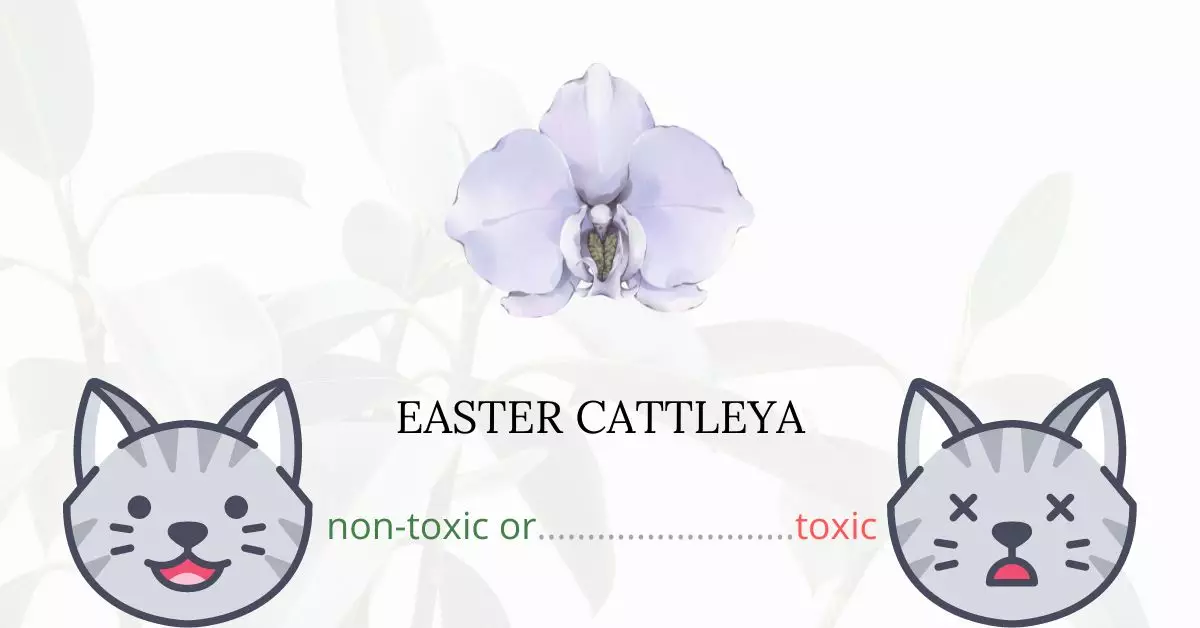Easter Cattleya, also known as Easter Orchid, is non-toxic to cats.
In our commitment to providing reliable and accurate information to pet owners, this article was written in close collaboration with a team of experienced DVMs (doctors of veterinary medicine). Through their expert contributions and our thorough research on high-authority websites, such as ASPCA and PetMD, we can confidently assert the safety of various plants, including Easter Cattleya, for your feline companions.
The ASPCA further confirms that orchids, in all their varieties, pose no toxicity threat to cats.
Can Cats Eat Easter Cattleya or Easter Orchid?

While eating orchids may give your curious kitten a stomachache and maybe induce vomiting, the ASPCA informs us that orchids are not hazardous to cats. This is true of all orchid kinds.
Keep in mind that pesticides and fertilizers may be detrimental to your cat, so only use what you’re sure is safe.
What is Easter Cattleya or Easter Orchid?

The Easter orchid (Cattleya mossiae) is a purple-pink flowering orchid native to Venezuela. It is a species of labiate Cattleya orchid. The white-flowered variation is sometimes called as Cattleya wagneri.
This species blooms in the spring, often between March and May. It’s a medium-sized Cattleya with a unifoliate (one leaf per bulb) growing habit.
When the light levels are perfect, the leaves will be lime green in color and grow best in bright, indirect light. It belongs to a group of orchids that have a strong fragrance. It has a distinctive aroma that is both intense and sweet. This perennial herb can be grown in hanging baskets because it has a self-supporting growth type.
Keeping Cats Away From Easter Cattleya or Easter Orchid

You’ll need to take a multi-pronged approach to keep your cats away from your orchids. Begin by keeping plants and flowers out of reach of your pet. Hang window planters, use wall-mounted vases for flower arrangements, or put your plant collection in a place where your cat is not allowed.
If none of these options are viable, consider making a simple vinegar and water spray. After ensuring that it is safe for the species, apply it to your plants or flowers. If this doesn’t work, you can use cinnamon or cayenne pepper to coat the foliage of your plants as a greater deterrent.
You’ll need to provide a more appealing option for your cat in addition to preserving the plants and flowers you don’t want him to munch on. Grow cat grass in a container that they can access at all times, and make sure they feel safe and secure in their surroundings.
Plants to Avoid For Your Cats
If you are a cat owner and unsure if the plants growing in your yard are harmful to your cats, check out this list of toxic plants for cats. You can also check our list of non-toxic plants for cats.





